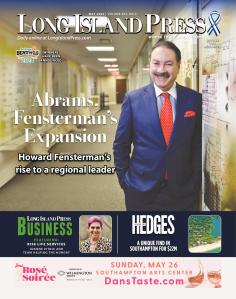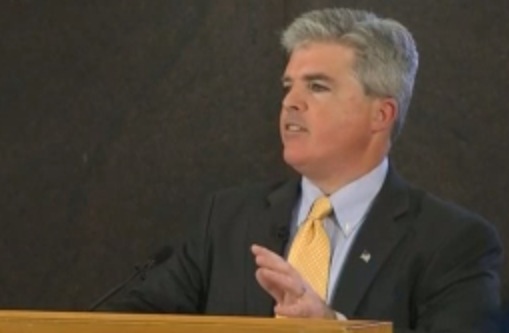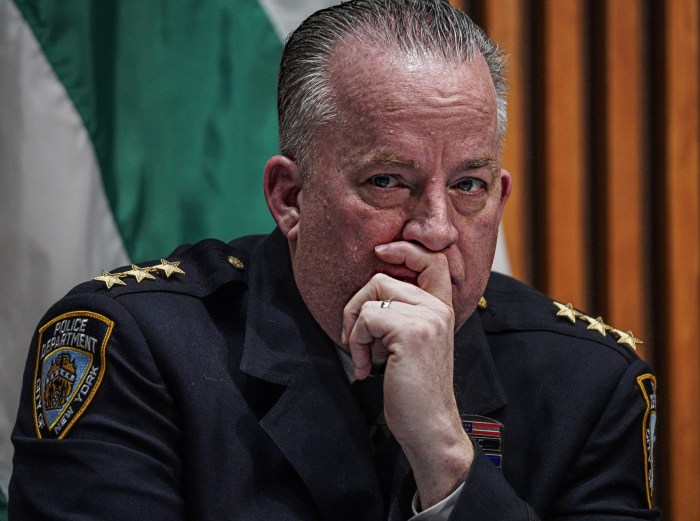Suffolk County Executive Steve Bellone’s Connect Long Island idea has become a project that relies upon assumptions instead of realities.
What started as a relatively simple concept, employing Bus Rapid Transit (BRT) lines to connect downtown areas with research centers and employment hubs, has evolved into so much more.
When it was first announced in 2012, the County Executive’s office explained that “the Connect Long Island initiative aims to create new mass-transit connections between major roadways, Long Island Rail Road stations and transit-oriented downtowns to relieve traffic congestion, increase mobility and spur economic growth.”
At the time, economist Marty Cantor, Suffolk’s former economic development commissioner, issued a strong rebuke of the proposal.
“Connect Long Island makes little sense,” he wrote, “considering that there is no current demand for a bus service that won’t materialize for two decades, will cost millions of dollars that Suffolk doesn’t have and requires new buses, new road systems and old expensive labor.”
A couple of years later, instead of just linking areas like Patchogue to Stony Brook University, the project is being used to justify the electrification of the LIRR’s Port Jefferson Branch and the addition of a double track on the LIRR between Farmingdale and Ronkonkoma. The future of the double track is uncertain, and electrification isn’t even listed on the MTA’s next five-year capital plan, which already faces at least a $15-billion hole before it can be finalized.
A fundamental flaw of the proposal is that still tenuous projects like Heartland Town Square in Islip are another part of the equation. Bellone is envisioning his Connect Long Island proposal linking the mega project to both the Deer Park and Kings Park LIRR stations, while the expansion of the state-owned Sagtikos Parkway, necessary to accommodate the anticipated spike in traffic from thousands of new residents, is far from a done deal. Yet somehow Connect Long Island is now based on the assumption that Heartland will be built and the road will somehow be widened.
Read “Heartland Town Square Proposal Is Too Big For Only Islip Town Board’s Approval” HERE
The Suffolk county executive also proposed the creation of an additional BRT line to the Yaphank LIRR station. Bellone has since suggested running an additional railroad spur from the mainline to the Brookhaven National Lab. Realistically, between the lack of government funding and the large tracts of land that it would require which are located in the heavily restricted Central Pine Barrens, this extension would seem extremely unlikely unless there is federal intervention.
Basically, Bellone needs to show some hard data in order to justify the notion that Connect Long Island is even a viable option. Is there marked demand for north-south transit linkages in Stony Brook, Kings Park and Yaphank? Even the much-touted Route 110 corridor’s BRT route could use accurate ridership projections instead of the administration’s anecdotes.
A good idea doesn’t necessarily mean it’s the right idea. We need to have fact-backed proposals, not a “build it and they will come” mindset.
Enough is enough.
Suffolk County isn’t engaging in planning, but rather in wishing. It’s pushing for important expansions in our wastewater infrastructure not on the merits of protecting our environment—a truly vital concern for the Island’s future—but on the rather slippery slope of promoting more growth. And so, areas as diverse as Hampton Bays and Smithtown are promoted for development under the guise of plugging that overhyped “Brain Drain” dilemma when the demographics don’t justify it and the real need gets muddied. Wastewater treatment should not be mistaken for bulking up the Island’s “emergency preparedness” after Superstorm Sandy. Those are different concerns.
What once was a good idea thanks to its simplicity and relative ease of implementation, has, like all else in the development world here, become everything to everyone.
We, as an Island, cannot just build our way out of our economic woes. Further, we must become smarter about approving projects of regional significance. Under the current model, we run the risk of both over-saturating our already struggling economy, and worse, creating higher density sprawl that augments our problems rather than alleviating them.
Bellone’s concept isn’t all bad. Any proposal that brings a sense of regional cohesion to the Island should be explored, but do it in a serious manner. Anecdotes don’t justify land use policies.
The key to Connect Long Island’s success is highlighting the potential benefits to our residents, and making them want to leave their cars and climb aboard the Bus Rapid Transit line instead. The county executive should focus all of his publicity resources on promoting the Route 110 corridor, an already successful employment hub on the Island. This area should serve as the pilot program. If it’s successful, and if ridership projections justify it, then implement the BRT on Nicholls Road.
Do Stony Brook students truly want to travel to Patchogue? Find out. Do workers at the Stony Brook University hospital and the campus actually commute south to north? Provide the analysis. Where do Brookhaven National Laboratory workers really reside? Would they ever use the LIRR in enough numbers to justify the additional track work?
Instead of telling stories, Suffolk County has to roll up its sleeves and get to work on planning. Maybe the data will show that Connect Long Island is a great idea. Maybe it won’t. We won’t know for sure until we actually do the research and the results are in. Wishing will not make it so.
Rich Murdocco writes on Long Island’s land use and real estate development issues. He received his Master’s in Public Policy at Stony Brook University, where he studied regional planning under Dr. Lee Koppelman, Long Island’s veteran master planner. Murdocco will be contributing regularly to the Long Island Press. More of his views can be found on www.TheFoggiestIdea.org or follow him on Twitter @TheFoggiestIdea.


























